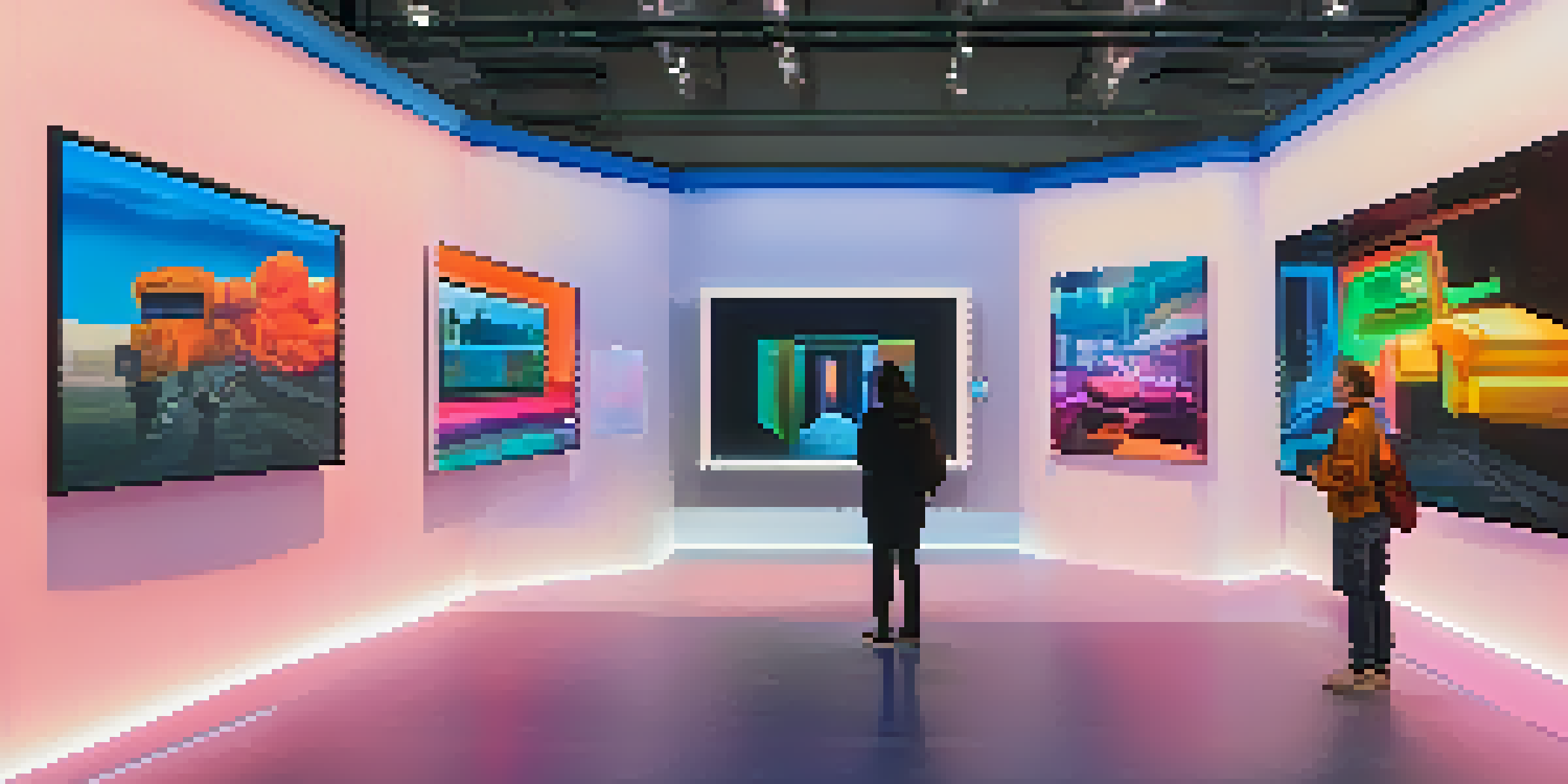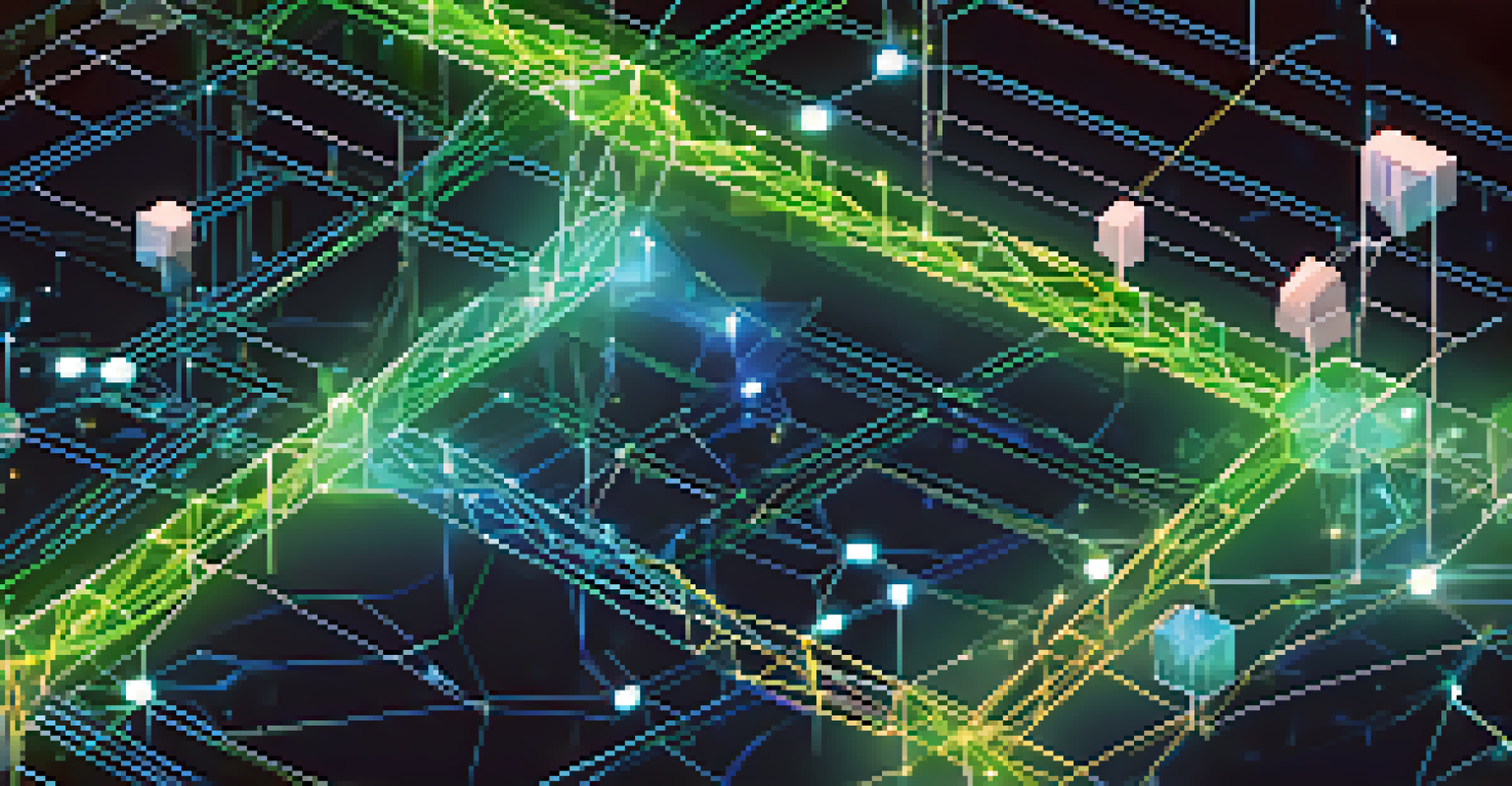The Importance of Interoperability in NFT Ecosystems Explained

What is Interoperability in NFT Ecosystems?
Interoperability refers to the ability of different systems to communicate and work together seamlessly. In the context of NFTs, it means that assets can be utilized across various platforms and applications without a hitch. For instance, if you own an NFT in one video game, interoperability would allow you to use that same NFT in another game, enhancing its value and utility.
Interoperability is not a feature, it's a necessity for the future of digital assets.
Imagine a world where your digital collectible isn’t confined to a single platform. Instead, it can be showcased in multiple virtual galleries or even transferred between different games. This fluidity not only enriches the user experience but also fosters a more vibrant and interconnected NFT ecosystem.
Without interoperability, NFTs risk becoming isolated artifacts, limiting their true potential. Users would be stuck with assets that can only function in a single context, which could stifle innovation and creativity in the rapidly evolving digital landscape.
Benefits of Interoperability for Users
For users, interoperability opens up a treasure trove of opportunities. It allows individuals to maximize their investment in NFTs by using them across various platforms and applications. This flexibility makes NFTs more appealing, as collectors can showcase their assets in diverse environments, from virtual worlds to online marketplaces.

Consider a scenario where a digital artist creates an NFT that can be used in multiple games. Players can not only display the artwork but also interact with it in various ways, such as using it as an in-game item. This enhances the overall user experience and encourages more people to engage with NFTs.
Interoperability Enhances NFT Value
Interoperability allows NFTs to be utilized across multiple platforms, increasing their utility and appeal.
Moreover, interoperability can lead to greater liquidity in the NFT market. When assets can be easily transferred and utilized across platforms, it creates a more dynamic marketplace, attracting more buyers and sellers who appreciate the convenience and versatility.
Interoperability and Market Growth
Interoperability plays a vital role in the growth of the NFT market. When assets can transcend individual platforms, it encourages more developers and creators to participate in the ecosystem. This influx of talent can lead to innovative projects that provide unique value to users.
The power of NFTs lies in their ability to be more than just collectibles; they can be gateways to new experiences across platforms.
For example, think of how the rise of cross-platform play in gaming has expanded player bases. Similarly, when NFTs are interoperable, it broadens their reach and appeal to a wider audience. This can significantly boost market demand, driving further development and investment in the NFT space.
As more users engage with interoperable NFTs, the overall ecosystem benefits from increased visibility and awareness. This creates a positive feedback loop where growth begets more growth, solidifying the market's foundation.
Challenges to Achieving Interoperability
Despite its many benefits, achieving interoperability within NFT ecosystems is not without challenges. Different platforms often have varying standards and protocols, which can complicate integration efforts. These discrepancies can create barriers that prevent seamless interaction between NFTs and platforms.
For instance, a game built on one blockchain may struggle to communicate with another that uses a different technology. This fragmentation can hinder the user experience and limit the potential of NFTs, making it essential for developers to find common ground.
Market Growth Through Cross-Platform
By enabling NFTs to transcend platforms, interoperability attracts more creators and users, driving market demand.
Additionally, the lack of established frameworks or protocols for interoperability can slow down progress. As the NFT landscape continues to evolve, it’s crucial for the community to collaborate and create standards that facilitate seamless interactions.
Innovative Solutions for Interoperability
To overcome the challenges of interoperability, innovative solutions are emerging. Projects like cross-chain bridges and standards such as ERC-721 and ERC-1155 are paving the way for better integration. These technologies allow NFTs to move freely between different blockchains, enhancing their versatility.
Imagine a digital asset that can seamlessly transition from being a collectible in one game to an avatar accessory in another. This level of flexibility can significantly boost user engagement and satisfaction, making NFTs much more valuable.
Moreover, ongoing collaboration among developers, blockchain communities, and industry stakeholders is essential. By working together, they can create shared standards and protocols that foster a more interconnected NFT ecosystem.
The Future of Interoperability in NFTs
Looking ahead, the future of interoperability in NFT ecosystems holds immense promise. As technology continues to advance, we can expect more robust solutions that enhance the connectivity of digital assets across platforms. This evolution could redefine how we perceive and interact with NFTs.
Picture a future where you can effortlessly trade, showcase, and utilize your NFTs in diverse virtual spaces. Such a reality would not only enhance the user experience but also solidify NFTs as valuable assets that hold significance across various contexts.
Challenges in NFT Interoperability
Achieving interoperability faces hurdles due to differing standards and protocols across platforms, which can hinder seamless interaction.
Ultimately, as interoperability becomes more integrated into the NFT landscape, it will drive innovation and growth, creating a thriving marketplace that benefits creators, users, and investors alike.
Conclusion: Embracing Interoperability for the NFT Ecosystem
In conclusion, interoperability is a cornerstone of successful NFT ecosystems. It enhances user experience, fosters market growth, and encourages innovation. By embracing interoperability, we can unlock the full potential of NFTs, transforming them from isolated assets into dynamic, interconnected experiences.
As we look to the future, it's clear that collaboration and innovation will play pivotal roles in achieving seamless interoperability. The NFT community must come together to establish standards and frameworks that promote integration, ensuring a vibrant and accessible ecosystem for all.

Embracing interoperability is not just a technical necessity, but a strategic imperative for the NFT space. By doing so, we can create a thriving environment where creativity, value, and engagement flourish.